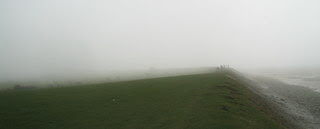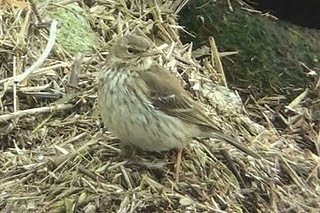It doesn't come as much of a surprise that the first Dartford Warbler (DW) was discovered on Bexley Heath near Dartford in Kent in 1773, incidentally the same man who found this bird was also responsible for naming the Kentish Plover which had been first discovered in Kent 14 years after the DW in 1787 when it was then an unknown species, yet again the same man was involved with the Sandwich Tern the first of which was again found in Kent in 1784.
The DW is a species almost exclusively insectivorous which suffers adversely in long cold winters and habit loss, favoured heathlands have been converted into housing and agriculture. They previously bred as far north as Staffordshire but a massive loss of 80% of lowland heath severely reduced populations. Having barely recovered from the harsh winter of 1946-47, the winters of 1961-62-63 almost wiped out the entire British population and the number of breeding birds was thought to have been as low as twelve pairs.
The DW now breeds in most counties of the south coast of England, distribution has also expanded, and as climate change continues towards warmer summers and milder winters a further expansion in the birds range might be expected, how long before we can have them here in Lancashire, in the winter months they are known to follow Stonechats around, but finding a Stonechat now seems hard enough never mind a DW.
The bird in the stunning photograph above is that of a Dartford Warbler which has been at the curiously named World's End in Denbighshire, Wales since Wednesday 2 March....Another image with a 'brilliant' tag with thanks to DC.
Footnote.
Interestingly also in Wales and with no stragglers further north than Staffordshire a bird was observed for two days at Tremadoc, Caernarvonshire in May 1932.
Footnote.
Interestingly also in Wales and with no stragglers further north than Staffordshire a bird was observed for two days at Tremadoc, Caernarvonshire in May 1932.














































